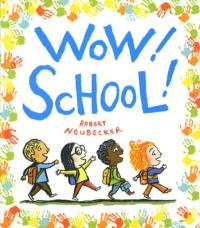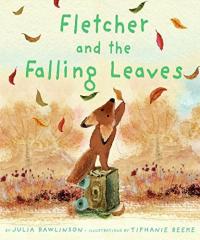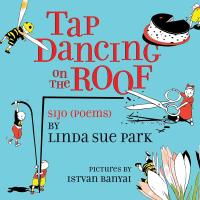
Wow! It is fall and time for school! Share Izzy’s first day as she travels from her mountain home to gleefully experience the first day. A large format supports the bold, highly detailed illustrations where readers can find Izzy to share her excitement.
Wow! School!

Animals and people prepare for fall in different ways and at different times around the world. The season is often celebrated by harvests, introduced and illuminated in lyrical prose and restrained illustrations.
We Gather Together

Some are perennials, others are annuals, but one thing is for sure: vegetables are grown to be eaten! This introduction to edible plants will inform and may lead to discussions of where vegetables grow, how we eat them, and when they are harvested.
The Vegetables We Eat

In this simple escapade, two young mice — Mouse and Minka — play in colorful fall leaves. Because the adventurers are small, focus remains on the earth-toned leaves for a simple, but satisfying time.
Mouse’s First Fall

The signs that autumn is here are all around, from shorter days to warmer clothing. A child chronicles these changes in short rhyming text accompanied by softly lined, serene illustrations.
I Know It’s Autumn

As autumn approaches, a young fox finds the changes he notices in his world disconcerting — until he sees his favorite tree, appearing even more beautiful as it sparkles with icicles. Readers can almost feel the ice on the final illustration in this comforting story.
Fletcher and the Falling Leaves

Look for “signs” when “…Maples blushing/Rivers rushing — /Fall is here.” From autumn to winter, feel the change of seasons while reading these short, evocative, and beautifully illustrated poems.
A Chill in the Air: Nature Poems for Fall and Winter

With a paper bag and a few other supplies, kids can make history come to life, travel to far-off places and try on other roles. Full color photographs of children in hats and head-dresses from around the world with easy-to-follow directions make these crafts that can lead to creative drama and more.
What Can You Do With a Paper Bag?

How does classical art relate to contemporary children? By recognizing that there are universal ways to convey emotion through body language and facial expressions. Handsome reproductions, challenging questions, and activities are presented to encourage children and adults to examine art in a fresh way.
Look! Body Language in Art

From very easy to more challenging, paper airplane folding is a craft that soars! Clear instructions along with crisp photographs make these airplanes sure-fire hits to fold, fly, and decorate.
The Klutz Book of Paper Airplanes

All of the supplies are provided, along with explicit directions to make a variety of pop-ups — everything from a big mouth frog to a gingerbread house. Building on the basic ideas, variations are suggested to make more pop-ups. You can write a story or make a card with this colorful paper art.
Let’s Make It Pop-Up

Crisp color photographs with numbered instructions and recommended ages make this extensive collection of nifty ideas for everyday and special holiday crafts useful. Older children will be able to follow the ideas independently, while adults will likely work with younger children.
Creative Crafts for Kids: Over 100 Projects for Two to Ten Year Olds

Create bugs, birds, and more, starting with a pattern of your hand. Easy directions provide jumpstarts for creative activities. An open format provides the helping hand while encouraging creativity.
Hand Art

A bald little boy loves playing with his dog and his ball (and the bears he meets), showing a range of emotions through changing faces. Young readers are encouraged to make the same faces — and to look at their face on the last mirrored page. They’re sure to enjoy this introduction to the art of acting!
Funny Face

Travel back in time with a bunch of cowpokes and their cattle from Texas all the way to Kansas on the old Chisholm Trail. Cartoon-like illustration and surprisingly informative language of a traditional folksong blend laughter and learning as the tale unfolds — with or without the tune (though music is included).
The Old Chisholm Trail

Prepare for a visit to a French-speaking country as you count from one (1) to ten (10) or les nombres de un/une (1) a dix (10) in this brightly colored “first” book. Intended to build vocabulary, concrete objects or shapes accompany the word in both languages with a pronunciation guide to accompany the words introduced. Trying to learn Spanish? You’ll be interested in My First Spanish Book!
My First French Book: A Bilingual Introduction to Words, Numbers, Shapes, and Colors

What Does Bunny See? A Book of Colors and Flowers

Yum! Yuck! A Foldout Book of People Sounds

Like haiku, sijo – a little known, brief poetic form from Korea – looks at everyday activities from breakfast to the weather. Sophisticated illustrations complement the seemingly simple language to delight readers and listeners.
Tap Dancing on the Roof: Sijo (Poems)

Mung-Mung: A Fold-Out Book of Animal Sounds

When Sang-Hee’s father cannot send the signal that no enemies are in sight, Sang-Hee must get the coals to light the fire on the mountaintop. Based on an actual signal system used in 19th century Korea, illustrations and fluid text create a riveting story that enlivens history. An author’s note provides more detail. Watch Park read an excerpt in our Meet the Author interview with her!
Firekeeper’s Son

What’s better than just eating a favorite dish? Anticipating it while preparing it, of course! Rhythmic, rhyming language and playful illustrations capture the joy of making this special Korean dish — and the joy of sharing it.
Country of origin: Korea
Bee-Bim Bop!

Meet penguins that live in icy places and in the heat as they cuddle and huddle, swim and waddle, honk, and more. Lively language and bold, bouncy illustrations bring these appealing creatures to life for young readers, while slightly older kids and adults can get even more penguin tidbits from the Penguin Puzzler and Penguin Parade at the book’s end.
Penguins, Penguins, Everywhere!

Matt and his twin sister, Bibi accompany their scientist parents to Peru where they stumble into an archaeological adventure. They ride their guanaco (a cousin to the llama), decode the patterns on the poncho, and find the mysterious lost city of Quwi! A note to adults suggests additional patterning activities.
